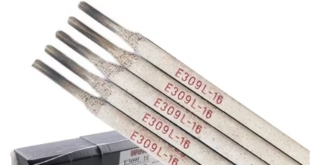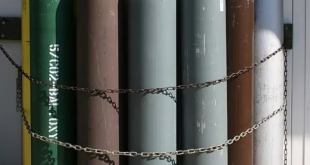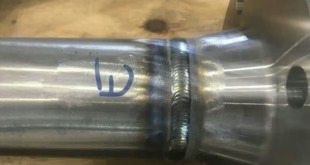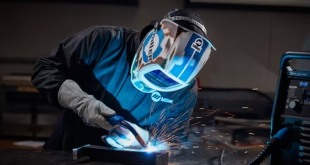How To Improve Fatigue Life of Welded Joints?
Introduction
In the realm of structural integrity and longevity, the significance of optimizing fatigue life in welded structures cannot be overstated. Welded joints serve as critical components in a myriad of applications, ranging from towering skyscrapers to intricate aerospace assemblies. The ability of these welded connections to withstand cyclic loading and extended operational periods is paramount to ensuring safety, reliability, and cost-effectiveness.
The relentless forces of cyclic loading that welded structures endure over their lifetimes often lead to fatigue failure – a mode of structural breakdown that occurs gradually through the accumulation of microcracks. This phenomenon poses a substantial threat, as it can precipitate catastrophic failures without warning, endangering lives and causing extensive economic losses. Improving the fatigue life of welded joints is, therefore, a pursuit that resonates across industries and disciplines. Enhancing fatigue performance not only extends the service life of structures but also augments operational efficiency, minimizes downtime, and mitigates the need for premature replacements.
Welding processes, representing the fusion of metals through localized heating and melting, wield a profound influence on the fatigue performance of welded joints. The dynamic interplay between thermal cycles, cooling rates, and material transformations during welding can impart residual stresses and introduce microstructural changes that greatly affect fatigue resistance. The choice of welding process, welding parameters, and consumables can either bolster or compromise the long-term durability of welded connections.
This comprehensive guide is dedicated to unraveling the intricate relationship between welding processes and fatigue life improvement in welded structures. We delve deep into the underlying principles that govern fatigue phenomena, exploring the multifaceted factors that impact fatigue performance.
Understanding Fatigue and Welding
Fatigue, a silent and insidious enemy of structural integrity, is a mode of failure characterized by the progressive growth of cracks under repeated cyclic loading. Unlike sudden catastrophic failure, fatigue-induced damage accumulates gradually, making it a critical consideration in the design and maintenance of welded structures. The cyclic stresses induce microscopic cracks at stress concentrations, which then propagate over time until they reach a critical size, ultimately leading to failure. This phenomenon underscores the need for vigilant assessment and improvement of fatigue life in welded joints.

Factors Influencing Fatigue Life in Welded Joints
The fatigue performance of welded joints is influenced by a complex interplay of factors that demand meticulous consideration during design, fabrication, and maintenance.
- Welding Process Selection: The choice of welding process has far-reaching effects on fatigue life. Different processes, such as SMAW, GMAW, GTAW, and SAW, introduce varying thermal cycles and cooling rates, leading to distinct microstructural changes and residual stress distributions. Selecting the most suitable process for a specific application can significantly impact fatigue resistance.
- Material Properties: The mechanical properties of base metals and filler materials are pivotal in determining the fatigue behavior of welded joints. Factors like yield strength, toughness, and fatigue limit directly influence the ability of a structure to endure cyclic loading without failure.
- Joint Design and Geometry: The geometry of the welded joint profoundly affects its fatigue performance. Fillet welds, for instance, can introduce stress concentration points, while well-designed butt welds with smooth transitions and appropriate throat thickness can distribute stresses more evenly, enhancing fatigue life.
- Residual Stresses and Distortion: Welding inherently introduces residual stresses and distortion due to rapid heating and cooling. These residual stresses can exacerbate stress concentrations and initiate crack formation. Effective stress relief techniques, such as heat treatment or vibratory stress relief, play a crucial role in improving fatigue resistance.
- Surface Finish and Post-Weld Treatments: Surface finish at weld toes can serve as nucleation sites for cracks. Proper weld toe grinding and blending help mitigate stress concentration and improve fatigue life. Additionally, techniques like shot peening induce beneficial compressive stresses at the surface, retarding crack initiation and growth.
Best Practices for Weld Design and Material Selection
Selecting Appropriate Base Materials for Fatigue-Prone Applications
The foundation of fatigue resistance begins with judiciously selecting suitable base materials. The mechanical properties of the chosen materials play a pivotal role in determining the structural durability. Higher yield strength and toughness are desirable attributes, as they enhance the material’s ability to absorb and distribute cyclic stresses. Additionally, considering environmental factors, corrosion resistance, and compatibility with the intended application further contributes to extending fatigue life.
Importance of Joint Design Optimization
A well-conceived joint design is a cornerstone of fatigue-resistant welded structures. The geometric arrangement of welds profoundly influences stress distribution and crack initiation. Thoughtful joint design optimization can significantly enhance fatigue performance.
- Fillet Welds vs. Butt Welds: While fillet welds are commonly used due to their ease of fabrication, butt welds often exhibit superior fatigue resistance. Butt welds distribute stresses more evenly across the joint and reduce stress concentrations inherent in fillet welds.
- Smooth Transitions and Stress Concentrations: Sharp changes in geometry, such as abrupt transitions or notches, can lead to stress concentrations that promote crack initiation. Smooth transitions, gradual changes in thickness, and radii at high-stress areas help mitigate these concentration points and enhance fatigue life.
Effective Usage of Weld Reinforcement and Throat Thickness
Weld reinforcement and throat thickness have a direct impact on fatigue resistance. While excessive reinforcement can lead to stress concentration, inadequate reinforcement can compromise joint strength. Striking the right balance is crucial.
- Weld Reinforcement: Optimal weld reinforcement ensures that the joint is adequately supported while minimizing stress concentrations. Overly excessive reinforcement should be avoided to prevent the introduction of stress concentration points.
- Throat Thickness: The throat thickness of a weld, which is the distance from the root of the weld to the face, influences the distribution of stresses. Ensuring an appropriate throat thickness contributes to uniform stress distribution and overall fatigue life improvement.
Welding Process Selection and Optimization
Overview of Common Welding Processes
The choice of welding process is a pivotal decision that profoundly impacts the fatigue performance of welded joints. Different welding techniques introduce distinct thermal cycles, cooling rates, and material interactions, ultimately influencing the microstructure and residual stress distribution. Understanding the characteristics of various welding processes is crucial for optimizing fatigue resistance.
- Shielded Metal Arc Welding (SMAW): SMAW, commonly known as stick welding, utilizes a consumable electrode coated with flux. It is versatile, suitable for various materials, and widely used in construction. However, the slower deposition rate and potential for slag inclusion can affect fatigue properties.
- Gas Metal Arc Welding (GMAW/MIG): GMAW employs a continuous electrode wire and shielding gas. It offers high deposition rates and is suitable for various materials. The controlled nature of GMAW can yield consistent results, but care must be taken to manage heat input.
- Gas Tungsten Arc Welding (GTAW/TIG): GTAW employs a non-consumable tungsten electrode and inert shielding gas. It produces high-quality welds with precise control, making it ideal for critical applications. Its lower heat input can help in managing residual stresses and distortion.
- Submerged Arc Welding (SAW): SAW involves a continuous wire electrode and a granular flux covering the weld. It is efficient for high-deposition welding of thick materials and is often used in heavy industries. However, controlling heat input can be challenging.
Influence of Welding Parameters on Fatigue Life
Fine-tuning welding parameters can significantly affect the fatigue performance of welded joints. These parameters directly impact the microstructure, residual stress, and overall quality of the weld.
- Heat Input and Cooling Rates: Controlling heat input and managing cooling rates during welding can influence the microstructural evolution. Proper heat management helps mitigate the formation of brittle phases, ensuring a more ductile microstructure that enhances fatigue resistance.
- Welding Speed and Travel Angle: Welding speed and travel angle affect the size and shape of the weld bead. Faster welding speeds can reduce heat input, while travel angle can influence bead shape and penetration. Balanced adjustments contribute to controlling residual stresses and achieving desired joint properties.
- Electrode/Filler Material Selection: The choice of electrode or filler material affects the mechanical properties and corrosion resistance of the weld. Selecting materials with compatible properties to the base metal is crucial for maintaining consistent fatigue performance.
Mitigating Residual Stresses and Distortion
Understanding Residual Stresses and Their Impact
Pre-Weld and Post-Weld Stress Relief Techniques
- Heat Treatment: Controlled heating and cooling cycles, often performed after welding, can help relax residual stresses. Stress-relief heat treatment reduces the risk of crack initiation and propagation, enhancing fatigue resistance. Careful temperature and time control is crucial to avoid undesirable changes in material properties.
- Vibratory Stress Relief: Vibratory stress relief involves subjecting the welded structure to controlled mechanical vibrations. This process can help redistribute residual stresses and reduce their magnitudes, promoting better fatigue performance. It is particularly useful for large or complex structures.
Minimizing Distortion Through Proper Fixturing and Clamping
Distortion, an outcome of the non-uniform thermal contraction during welding, can compromise the fit and functionality of welded components. Proper fixturing and clamping techniques can help mitigate distortion and residual stress build-up. Using jigs, fixtures, and controlled cooling methods ensures that the weldment retains its desired shape and maintains consistent dimensional accuracy.
Surface Finish and Post-Weld Treatments
Role of Surface Finish in Fatigue Performance
Surface finish plays a critical role in fatigue performance by influencing stress concentration and crack initiation. Irregularities at weld toes or surfaces can act as stress concentration points, exacerbating fatigue susceptibility. A smooth and uniform surface finish can help distribute stresses more evenly and reduce the likelihood of crack initiation.
Importance of Weld Toe Grinding and Blending
Properly addressing weld toes, where stress concentrations are often prominent, is vital. Grinding and blending the weld toes smooth the transitions between the weld and the base metal, minimizing stress concentrations and creating a more gradual load transfer. This practice improves fatigue resistance and reduces the likelihood of crack initiation.
Shot Peening and Its Benefits in Fatigue Enhancement
Shot peening involves bombarding the surface of a weld with small spherical media (shots) to induce compressive residual stresses. These compressive stresses counteract applied tensile stresses, retarding crack initiation and growth. Shot peening is particularly effective in enhancing the fatigue life of welded joints, making it a valuable post-weld treatment.
FAQs
What is fatigue life improvement in welded structures?
Fatigue life improvement refers to enhancing the ability of welded connections to withstand cyclic loading and prolonged operational periods, minimizing the risk of fatigue-induced failure in various applications.
How does welding process selection influence fatigue performance?
Different welding processes, such as SMAW, GMAW, GTAW, and SAW, introduce varying thermal cycles and material interactions, impacting microstructure and residual stresses, thus affecting the fatigue resistance of welded joints.
What role does joint design play in fatigue resistance?
Joint design, whether fillet or butt welds, influences stress distribution and fatigue performance. Smooth transitions, appropriate reinforcement, and optimal throat thickness all contribute to better fatigue resistance.
What are some methods to mitigate residual stresses and distortion in welds?
Residual stresses and distortion can be reduced through techniques like heat treatment, vibratory stress relief, and proper fixturing and clamping, ensuring welds maintain their intended shape and integrity.
How do non-destructive testing (NDT) techniques contribute to weld quality?
NDT techniques such as ultrasonic testing, radiography, and dye penetrant testing provide crucial insights into weld quality by detecting defects and anomalies without damaging the weld, ensuring structural integrity and reliability.
Conclusion
In the intricate world of welded structures, the pursuit of enhancing fatigue life emerges as a paramount endeavor. Through a thorough exploration of fatigue phenomena, welding processes, design optimization, stress mitigation, and quality control, we have embarked on a journey towards creating welds that endure the test of time and cyclic loading.
The importance of fatigue life improvement cannot be overstated, as it directly impacts the safety, reliability, and cost-effectiveness of diverse applications, spanning from towering skyscrapers to intricate machinery and aerospace marvels. By meticulously selecting appropriate base materials, optimizing joint designs, and leveraging advanced welding processes, we lay the foundation for structures that exhibit remarkable resilience against fatigue-induced failure.
Delving into the realm of residual stress management, we discover the critical role of stress relief techniques and effective fixturing in preserving weld integrity. The surface finish and post-weld treatments segment underscores the value of meticulous weld toe management, ensuring that surfaces remain free from stress concentration points, while shot peening emerges as a potent tool in enhancing fatigue resistance.
 Welding of Welders All about Welding and Welders
Welding of Welders All about Welding and Welders



